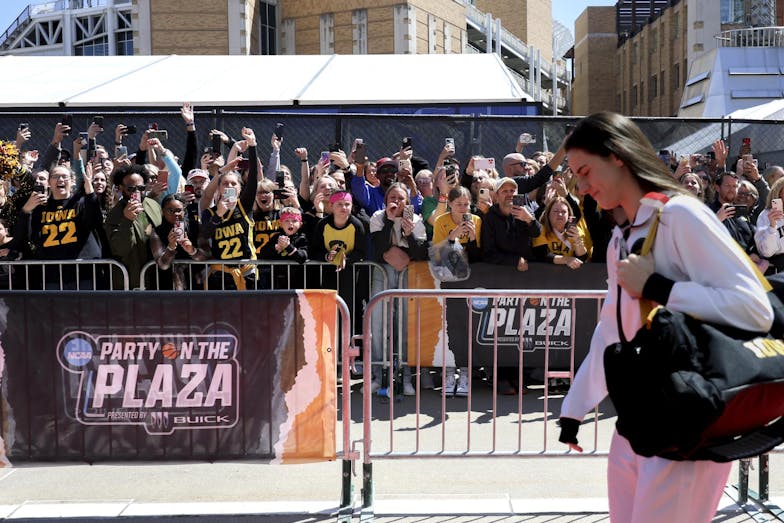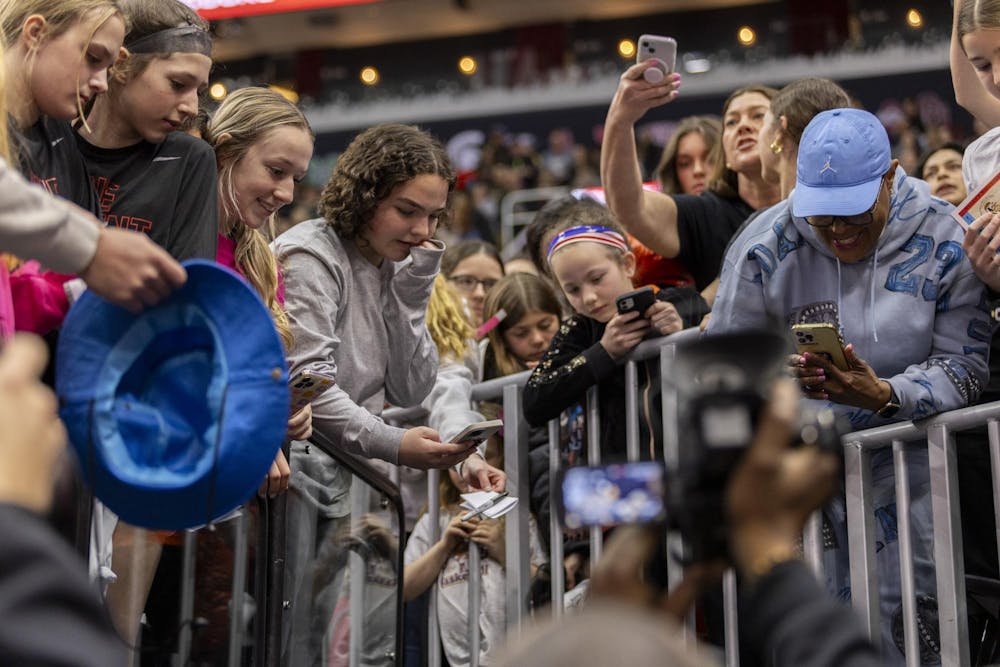The buzzer sounding at the end of the national championship game gave the South Carolina women’s basketball team an opportunity to celebrate its on-court accomplishments. The Gamecocks had just clinched its third NCAA Tournament title and completed its first-ever undefeated season, finishing the 2023-24 campaign with a perfect 38-0 record.
For South Carolina women’s head basketball coach Dawn Staley, it offered a chance to consider the game's impact beyond the walls of Rocket Mortgage FieldHouse. Staley said in a press conference ahead of the national championship that she hoped it would be “the most-watched game” in women's basketball history.
She reiterated that point after the Gamecocks' victory, partially because of Iowa senior guard Caitlin Clark’s participation in it.
“I hope we were able to attract some more people by the amount of eyeballs that probably watched our game just because Caitlin was appearing in it,” Staley said.
Nielsen’s television viewership figures released on Tuesday confirmed that was the case. The television broadcast of the national championship game averaged 18.9 million viewers and peaked at 24.1 million, the most ever for a college basketball game — men’s or women’s — on an ESPN platform.
The game set viewership records when those numbers were extrapolated beyond ESPN and women’s basketball. According to Nielsen, it was the second most-watched women’s sporting event in the history of United States television outside the Olympic Games. Only the 2015 FIFA Women’s World Cup Final between the U.S. women’s national soccer team and Japan received more viewers.
Staley and Clark said this increase in viewership stems from sports fans recognizing talent both on the court and in broadcast studios covering the games, which have helped elevate the profile of women’s basketball to new heights.
Clark has been one of the primary drivers of this phenomenon from an on-court standpoint, as her talent and play-making abilities have helped boost attendance and viewership for Iowa women’s basketball games over the course of her college career.
During Clark’s sophomore season, which took place in 2021-22— the first full season that was not impacted by COVID-19 — the Hawkeyes averaged 8,224 fans at home contests and 5,019 fans at away contests.
As Clark’s influence over the game has increased, so has the number of fans in the stands at her games. Attendance figures at Iowa women’s basketball games during the 2023-24 season ballooned to 14,914 fans per contest at home and 13,456 on the road.
Iowa’s most recent marquee matchups have also brought in higher viewership figures, dating back to last year’s national championship game against LSU. The contest drew 9.9 million viewers across ESPN’s platforms, which was then an all-time record.

Iowa senior guard Caitlin Clark walks down the red carpet into Rocket Mortgage FieldHouse on April 7, 2024. Clark's fans lined the carpet, with hundreds of them wearing her jersey number: 22.
That record has since been re-set twice leading up to Sunday’s national championship game. The Hawkeyes’ rematch against the Tigers in the Elite Eight averaged 12.3 million viewers, and its Final Four matchup against Connecticut averaged 14.4 million.
All three contests featured future WNBA draft picks, including Clark, LSU junior forward Angel Reese and UConn redshirt junior guard Paige Bueckers, who announced in February that she would be returning to the Huskies for another season.
Staley said the game’s increase in attention stems from its most important figures, whether they be players or coaches, using every opportunity to showcase the talent on display in these contests.
“I know we do our part in making sure we try to, as much as possible, shout it to the top of our lungs what our game is all about, and all of the storylines and all the talent and all the coaches and all the talent that's actually telling the stories,” Staley said.
Staley also said broadcast networks such as ESPN have helped women’s basketball grow after “(being) held back for a very, very long time.”
“I think ESPN has done a great job at broadcasting, giving us access to — a lot of games came on television this year that I probably watched the most out of any year,” Staley said.
Television coverage of the NCAA Women’s Basketball Tournament has undergone a rapid evolution within the past few years, just like the sport as a whole. It was not until 2021 that every tournament game from the first round onwards was given an exclusive time slot on one of ESPN’s channels, allowing for more viewership opportunities.
Staley said ESPN’s decision to make its on-air broadcast teams more diverse has also helped women’s basketball continue to grow. This year’s Final Four received studio coverage from Elle Duncan, Andraya Carter, Chiney Ogwumike, Carolyn Peck and Aliyah Boston — all five of whom are Black women Staley said have taken women’s basketball coverage “to another level.”
“They're giving credit where credit is due with every single team that is participating here at the Final Four. That's not always the case. They're breaking it down to its simplest form where everybody that is tuned in can really understand our game,” Staley said. “Sometimes, I have to stop. I'm just like, 'Damn, this is great. Can I find some strategy in this? Can we really do this?'”
Clark said increased national television coverage, alongside social media and NIL, has played an important role in helping the sport gain traction, as well.
“We've played on Fox, NBC, CBS, ESPN — you just go down the list, and we've been on every national television channel,” Clark said. “I think, no matter what sport it is, given the same opportunities, believe in them the same, invest in them the same, and things are really going to thrive.”
South Carolina senior guard Te-Hina Paopao said she hopes that women’s college basketball continues to grow in popularity even when its most sought-after players transition to playing in the WNBA.
“I love where we are growing the sport, not only women's basketball, but all around, and I'm just really excited to see how the growth keeps growing,” Paopao said. “I just hope that when your favorite college player is done playing college, that they follow them to the league. That's going to bring us more views and just more attention to women in general.”
This year’s women’s basketball tournament was historic for another reason, as the national championship game received higher viewership than the men’s tournament for the first time in history. According to Nielsen, 14.8 million viewers tuned in Tuesday night to watch UConn take on Purdue in the men’s national championship game — nearly 4.1 million viewers less than the women's national championship game received.
Staley said she is optimistic that women’s basketball games will eventually garner equal viewership to men’s basketball games. Advocating for increased revenue is the next step women's basketball coaches, players and administrators need to take in order to make the sport more equitable to men’s college basketball, she said.
“You look at what the 68 teams are going to divide up, I think I saw 170 million (dollars) between the 68 teams,” Staley said. “When you start bringing in revenue like that, it will move your campus in a different direction when it comes to women. So we've got to fight for that.”
Clark said even more growth in all these areas is possible as long as women are being given equal opportunities to showcase their talents on a national stage.
“When I think about women's basketball going forward, obviously it's just going to continue to grow, whether it's at the WNBA level, whether it's at the college level. Everybody sees it. Everybody knows. Everybody sees the viewership numbers," Clark said. "It just continues to get better and better and better, and that's never going to stop. When you continue to give them the platform, things like this are just going to continue to happen.”

